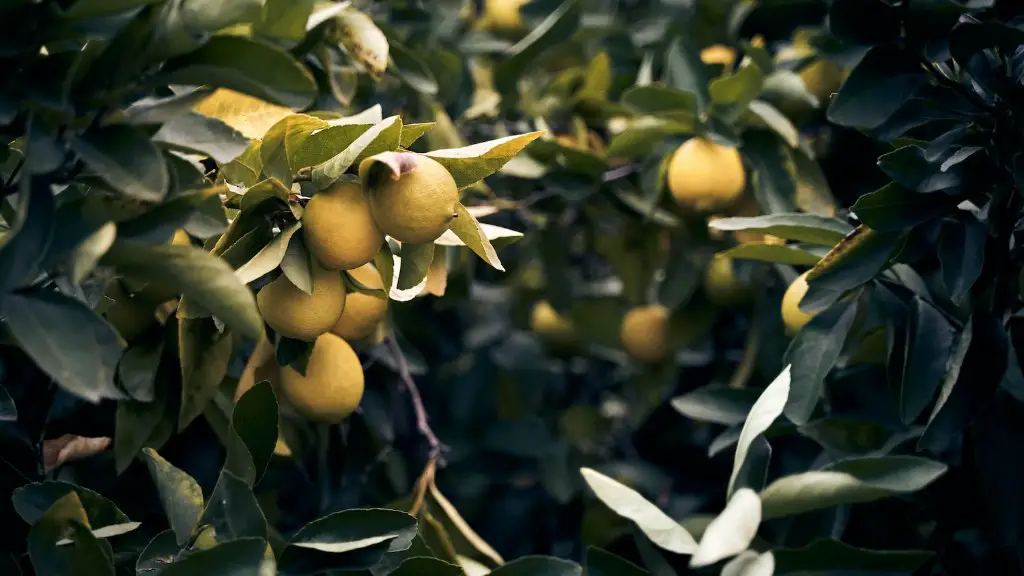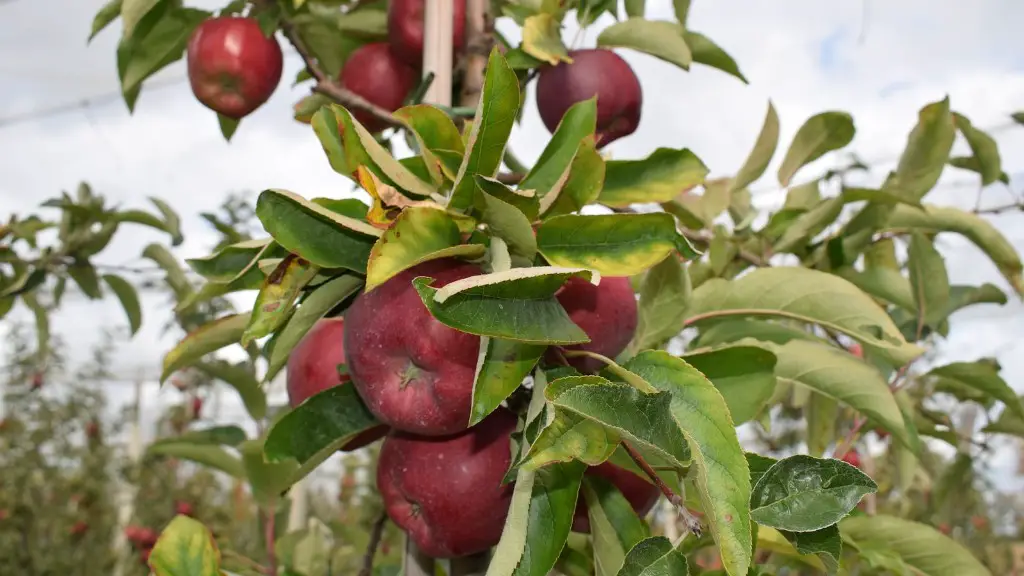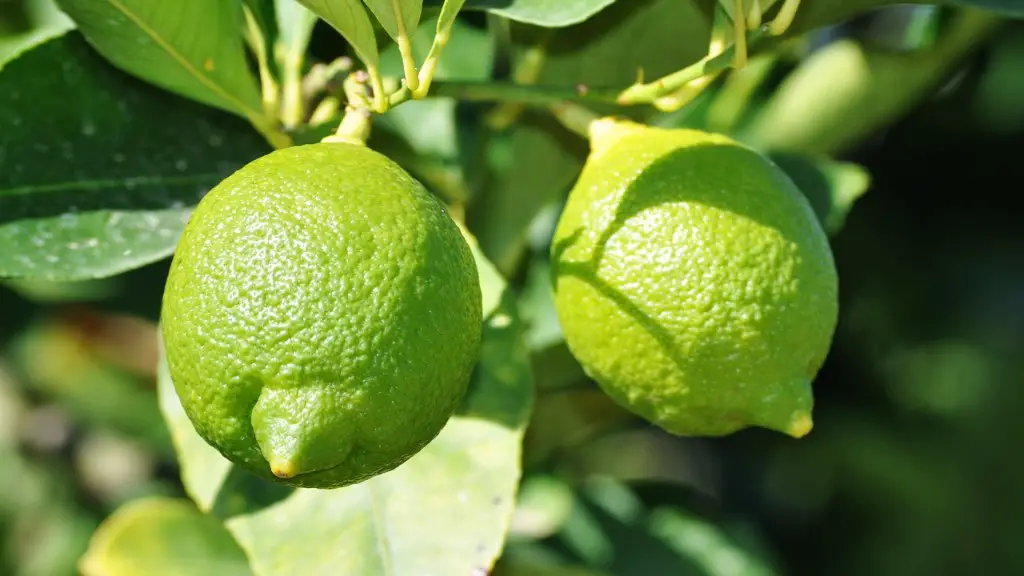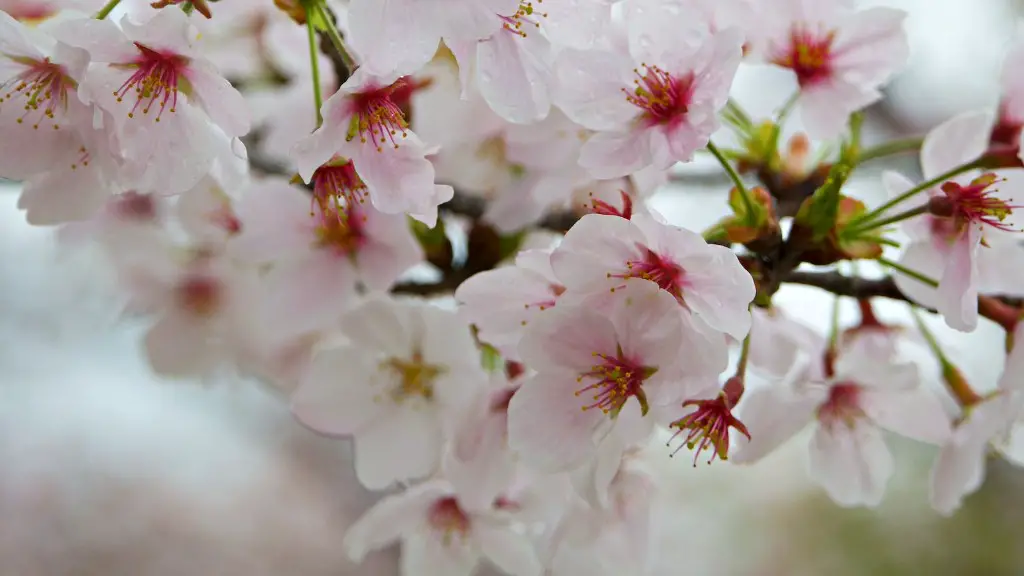Section 1
Removing an apple tree correctly is an essential part of maintaining any orchard. To do it correctly, two main steps must be taken: removal of the stump and removal of the root system. First, it is important to understand the types of tools needed for the task. A chainsaw and an ax may be used for cutting the trunk and branches, a steel pry bar for prising out the roots, and a stump grinder for the stump removal. Protection gear such as hard hats, work gloves, and other safety equipment should also be worn.
Secondly, it is essential to assess the size of the tree. Smaller trees can be cut with an ax and a chainsaw, while larger trees may require the services of an arborist. If an arborist is needed, it is important to choose an experienced and knowledgeable one who can safely handle the job. Furthermore, when cutting the trunk, it is important to remember to cut on the side opposite to the direction of the dominant wind.
Thirdly, the trunk and the larger branches should be severed at the base. If the tree is very tall, it may be necessary to cut off a few branches first to reduce its weight and provide better access to the base. Once the trunk is cut, the tree can be slowly and carefully lowered to the ground.
Fourthly, the large root system should be removed using a steel pry bar. The root system should be worked around in a circle to loosen the soil. Careful observation is necessary to ensure that the task is done properly and no roots are left in the soil. It is important not to damage any of the neighbouring trees while digging out the roots.
Lastly, the stump should be removed. This can be done manually or with a rented stump grinder. If doing it manually, a mattock or a shovel can be used to break the surface roots, followed by a sharp spade to excavate the stump. Once a significant portion of the root system has been removed, the entire stump can be dug out.
Section 2
Once the tree has been removed, the task of replanting may be required. This can be done in one of two ways. First, replanting may be done by planting a new apple tree in the same spot as the one that was removed. Careful consideration should be given to the size and position of the new tree and the space available for it to grow. The new tree should also be planted taking into account any soil drainage or irrigation issues.
Alternatively, the area can be replanted with shrubs or bushes. This is a popular option as it does not require as much care and maintenance as a full-grown fruit tree. Additionally, shrubs and bushes will grow quickly, allowing for a faster replanting process. For more resilient varieties, mulch may also be used around the base of the shrubs and bushes to reduce the chances of disease.
It is also important to consider any possible contamination of the soil when replanting. If the apple tree removal has been done correctly, the soil should not be affected. However, if there is suspicion of contamination, soil tests may be done to ensure that the new tree or shrubs will not be affected.
In addition, the area should be monitored for pests and diseases. Pest control measures such as mulching, trapping, and pruning can be used to reduce the spread of disease, while regular maintenance should be done in order to keep the area healthy and free of pests.
Finally, it is important to properly dispose of the old tree. The branches and trunk can be cut into smaller pieces and used for firewood or chipboard. The stump and root system, however, need to be disposed of separately in order to prevent the spread of diseases to other trees.
Section 3
The removal and replanting of an apple tree requires a certain level of expertise and experience. Professional arborists should be consulted and involved when taking on this task, as they have the knowledge and experience to do it safely and correctly. Additionally, it is important to consider the environmental implications of tree removal, and ensure that the area is replanted with native trees or shrubs to preserve the soil and its biodiversity.
The process of removing an apple tree, as with any tree, is not straightforward. It requires patience, attention to detail, and a professional approach. With the right knowledge, tools, and method, however, it can be done correctly and safely. Moreover, the replanting of new trees and shrubs can help to revitalise the area, making it a sustainable orchard once again.
When it comes to the actual removal of an apple tree, it is important to remember that various tools and methods may be used depending on the size, shape, and species of the tree. A chainsaw, an ax, a steel pry bar, and a stump grinder are all essential tools that need to be used, while proper safety measures must be taken at all times.
Once the tree has been removed and the area replanted, it is time to focus on the maintenance of the orchard. Regular pruning and trimming are essential in order to ensure the health, growth, and production of the trees. Additionally, a balanced fertilisation plan should be adopted, tailored to the unique needs of each tree.
Finally, it is important to consider the surrounding soil, in terms of texture, mineral content and drainage to ensure that the new tree or shrub is best suited for the area. For example, sandy soils require different fertilizers than clay soils, and this should be taken into account when replanting.
Section 4
In conclusion, the removal of an apple tree can be a complicated process due to its size, shape and size of root system, as well as the environmental implications associated with it. Therefore, it is important to use the right tools and techniques that are tailored specifically to the task. Furthermore, the replanting of the area should be done with caution and care, making sure to take into account the soil type, texture, mineral content and drainage.
When taking on this task, it is important to rely on the advice of professional arborists and well as to use the necessary protection equipment when using powerful tools such as chainsaws. The preparation stage is also crucial, with careful assessment of the size of the tree and its root system, followed by proper cutting and removal methods. Once the stump is removed, the area can be replanted with a new tree or shrubs.
It is also essential to focus on the maintenance of the orchard, with regular pruning, trimming and fertilisation. Other tasks such as pest control and soil preparation are also important, and should not be overlooked. With the right knowledge, tools, and methods, the removal of an apple tree can be done correctly and safely.
Finally, it is important to also consider the potential environmental effects of tree removal, as well as the replanting of the area with native trees and shrubs. If done correctly, this can help to regenerate areas that have been affected by deforestation, while still preserving the original natural environment.



